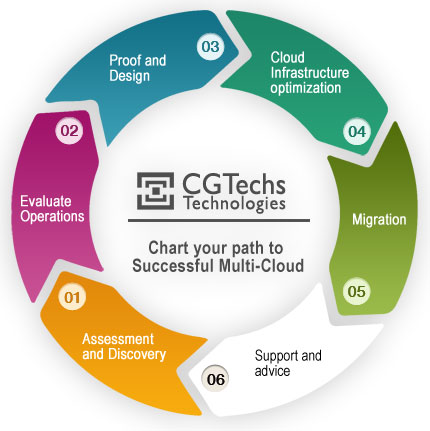Embrace digital transformation with cloud solutions
We modernize and simplify your IT with diversified cloud solutions services
The cloud has never been more accessible, but getting the most out of it requires having an effective plan and experts who can deliver your organization's specific vision.
No matter where you are in your journey to cloud computing, Cgtechs Technologies offers you a five-step cloud strategy that can help you accelerate your decision-making and optimize your return on investment.
- Assessment and Discovery : our experts help your organization understand and identify how to use your cloud infrastructures now and in the future.
- Evaluate Operations : we assess the services you will offer as well as their impact on your employees, your processes and your governance.
- Proof and Design : Adopting the public cloud can be a game-changer for your organization. Since every business is different, and every cloud is different, you will need to determine which public cloud(s) can best meet your needs.
- Cloud Infrastructure optimization : is a core requirement of private cloud deployments, providing the agility and scale to deliver cloud services from your physical infrastructures.
- Migration : Selection of a migration strategy; Application of the migration strategy; Find recommended tools for deployment.
- Support and advice
